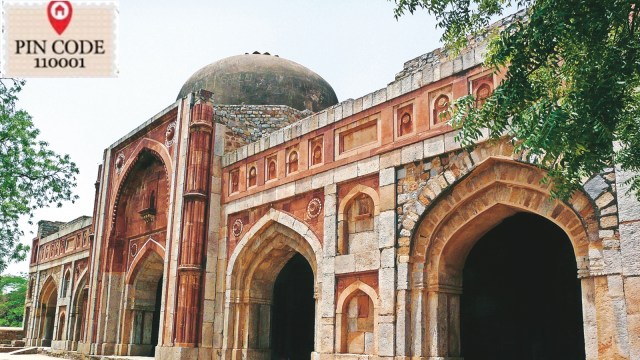Inside Mehrauli Archaeological Park, a famous monument shrouded in mystery
For many, the name Shaikh Jamali Kamboh may hold no further meaning than any other man who has lived in the past and has been forgotten in the annals of time.
 Jamali Kamali mosque inside Mehrauli Archaeological Park (File Photo)
Jamali Kamali mosque inside Mehrauli Archaeological Park (File Photo)At the end of a steep road inside the Mehrauli Archaeological Park, hidden behind a sharp right turn, a red sandstone monument emerges seemingly out of nowhere and entices you to step into the hushed courtyard with two lush trees to rest under.
This is Jamali Kamali mosque and tomb, a 16th-century monument shrouded in intrigue and mystery and many a ghost tale.
For many, the name Shaikh Jamali Kamboh may hold no further meaning than any other man who has lived in the past and has been forgotten in the annals of time.
However, Jamali lived through the reigns of three kings and two kingdoms, and he served in court the entire time.
According to Dr Gulfishan Khan, a history professor at Aligarh Muslim University, Jamali was a polymath, an extensive traveller and a leading Sufi scholar of his time. “A study of Shaykh Jamali’s literary and architectural contribution should show that he must be regarded a harbinger of the Perso-Islamic culture which witnessed its full flowering in the high Mughal era… He was a progenitor of the Indo-Islamic culture that flourished later,” she writes in her paper, Exploring the Geographies and Locales in Shaykh Jamali Dehlawi’s Siyar al-arifin.
Historian Rana Safvi, in her book Where Stones Speak: Historical Trails in Mehrauli, the First City of Delhi, says the mosque was believed to have been built on the platform of saint Khwaja Qutbuddin’s residence, and was attached to the tomb of Shaikh Fazlullah, or better known as his nom-de-plume, Shaikh Jamali Kamboh.
Kamboh had risen through the ranks over the years and served as Sultan Sikander Lodi’s tutor.
According to scholar Samir Zaweed, when the Lodi dynasty fell, Kamboh won favour by writing poems singing praises of Mughal emperors Babur and Humayun. He impressed the early Mughal kings so much that he soon earned the title Khusrau-i Sani or Khusrau the second, Zaweed writes in his paper, Medieval Monuments of Mehrauli.
“During Humayun’s reign between 1530-39, Shaikh Jamali accompanied the Sultan on his Gujarat campaign and during the expedition, he died there on May 2, 1536. His body was brought back to Delhi and buried in a room which, in 1528-29, he had built for his dwelling,” writes Zaweed.
Yet the presence of two tombs in the mosque’s annex would suggest that the person accompanying Jamali Kamboh into the afterlife would be half as well-known or even well-documented as him and his life.
However, very little except for theories exist on who Kamali of the Jamali-Kamali duo is. One theory, Zaweed writes, is that he was the true poet behind Jamali’s poems. Perhaps he was a disciple or a Sufi just like Jamali was and Jamali, fearing being overshadowed, never allowed Kamali to step out of his shadow.
The ASI board outside the mosque, however, says that the two were brothers. The cenotaphs inside the tomb give another name to Kamali altogether, naming the owner of the grave Zainuddin.
Who Zainuddin is, is another mystery.
Perhaps what makes the mosque most interesting is how its architecture showcases the transfer of power from the Lodis to the Mughals.
Percy Brown in his book, Indian Architecture in the Islamic Period, wrote how the monument shows no such remarkable change in architectural styles but rather a continuation of the Lodi dynasty’s architectural elements.
He notes that the Mughals were probably busy consolidating their power after defeating the Lodis in the Battle of Panipat to pay much attention to architecture. Nevertheless, he writes, “A definite attempt was being made towards refinement of style and designers were aiming at a form of architecture in which better material and workmanship were the main objects.”












